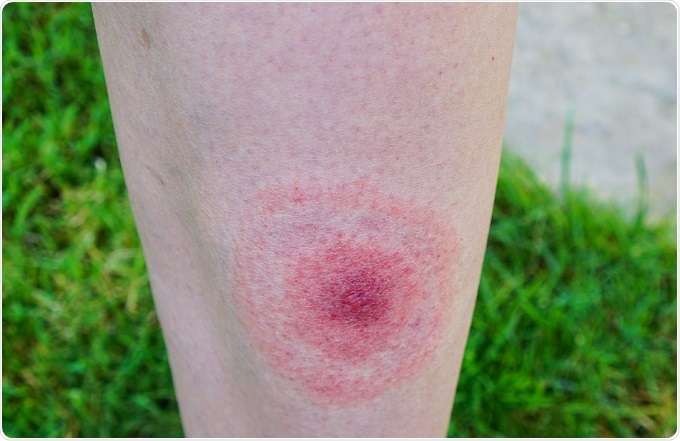A team of researchers led by Colorado State University has developed a test to facilitate early diagnosis of Lyme Disease, which it is hoped will improve treatment outcomes. Until now, it was difficult to distinguish Lyme disease from similar, less severe tick-borne conditions.
 Credit: AnastasiaKopa/Shutterstock.com
Credit: AnastasiaKopa/Shutterstock.com
Lyme disease is a serious infectious disease caused by Borrelia burgdorferi bacteria, which can be transmitted to humans via bites from infected blacklegged ticks. It is the most commonly reported vector-borne illness in the United States, affecting 300,000 people each year. Climate change has also led to increasing reports of the disease across Europe.
Lyme disease can present in myriad ways, but the most common symptoms include fever, headache, fatigue, and a characteristic skin rash called erythema migrans. These symptoms are very similar to those seen with other tick-borne diseases, such as Southern Tick-Associated Rash Illness (STARI). It is, however, important to know which disease has been contracted since Lyme disease can have serious consequences if left untreated.
The infection can spread to the heart, and the nervous system causing an irregular heartbeat, paralysis, cognitive problems, and inflammation of the brain and spinal cord. Early treatment of Lyme disease is thus essential to prevent debilitating illness.
It is extremely important to be able to tell a patient they have Lyme disease as early as possible so they can be treated as quickly as possible... Most Lyme disease infections are successfully treated with a two to three-week course of oral antibiotics"
Claudia Molins, microbiologist in the Division of Vector-Borne Diseases at Centers for Disease Control and Prevention
Unfortunately, existing tests are not able to definitely confirm Lyme disease during the early days of infection and it is commonly mistaken for less serious conditions, until it is too late. Since it is not desirable to prescribe antibiotics unnecessarily, a sensitive and specific test for Lyme disease is needed to ensure that infected patients receive early treatment.
Scientists from Colorado State University and Centers for Disease Control and Prevention have now identified reliable biomarkers for distinguishing Lyme disease from similar less severe conditions.
The researchers used mass spectrometry to measure a range of metabolites, including sugars, peptides, amino acids, and lipids and established that each disease or illness has a unique metabolic profile. They have now identified the differences between the metabolic profiles associated with Lyme Disease and STARI. Through determination of the levels of specific metabolites, the team was able to differentiate early Lyme disease from STARI with an accuracy of up to 98%.
John Belisle, professor of Microbiology, Immunology and Pathology at Colorado State University highlighted the importance of their findings:
We were able to tell the difference between early Lyme disease and Southern Tick-Associated Rash Illness by using biomarkers that show us how the body reacts to these illnesses...This could be important in helping to more accurately detect early Lyme disease, which is crucial because the longer people wait for Lyme disease treatment, the higher the potential risk for having more severe symptoms."
The team will now use their findings to develop a test that could be used in a diagnostic laboratory in a clinical setting.
Source